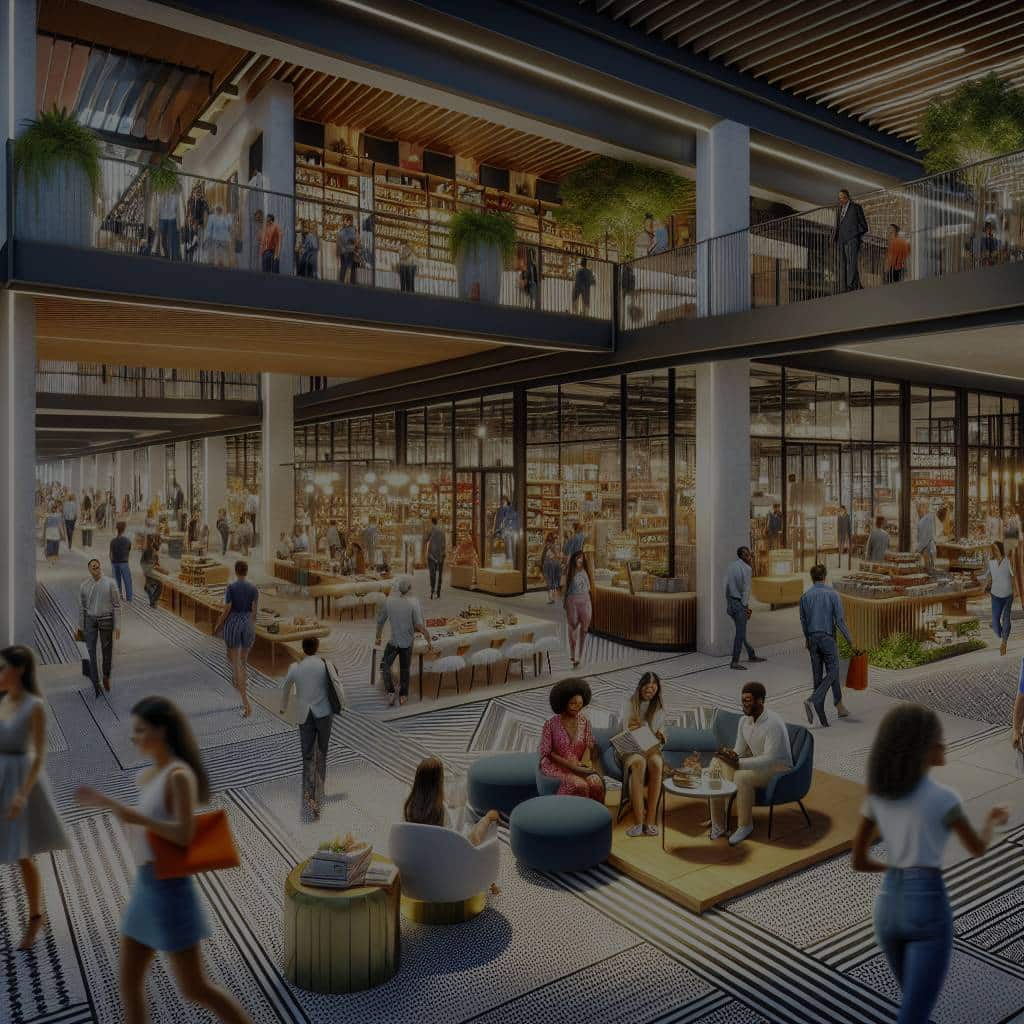How to Design Retail Spaces in Real Estate Developments to Maximize Shopper Engagement?

As the retail sector continues to evolve, it becomes more crucial than ever for real estate developers and store management teams to design retail spaces that not only attract customers but also foster shopper engagement. Today the design is no longer just about aesthetics. It’s about creating spaces that stimulate shopping experience, promote product interaction, and ultimately maximize profits. The role of retail spaces has changed, and so should their design.
The Importance of Retail Space Design
In the current retail landscape, the design of store space plays a significant role in the overall shopping experience. The layout of a store, the products it houses, and the ambiance it creates are all key factors in drawing customers in and encouraging them to spend more time — and money — in the space.
In parallel : How to Create a Real Estate Marketing Campaign Targeting International Investors?
The right store layout can create a flow that guides customers through the store, ensuring that they see a maximum range of products. The effective layout can also encourage product interaction, which can boost sales. A well-designed store can make shopping easier and more enjoyable, leading customers to stay longer and return more frequently.
Creating an Engaging Shopping Experience
One of the primary goals in designing retail spaces is to create an engaging shopping experience. This means creating a retail environment that stimulates the senses, fosters interaction, and makes shopping a pleasure rather than a chore.
Additional reading : What Are the Legal and Regulatory Considerations for Building Floating Real Estate?
The shopping experience begins even before customers set foot in the store. The storefront or window display should be visually appealing, drawing customers in. Once inside, the store layout should be clear and easy to navigate. Signage should be straightforward and help customers find what they are looking for.
Lighting is another essential element. It should not only make products look their best but also create a warm and welcoming ambiance. Scent and music can also contribute to the overall shopping experience.
Incorporating Technology for Enhanced Customer Interaction
The rise of e-commerce has put pressure on physical retail spaces to provide a shopping experience that cannot be replicated online. One way retailers are responding to this challenge is by integrating technology into their store designs.
Interactive displays and digital signage can provide customers with additional information about products, create a sense of excitement around new releases, or offer personalized recommendations. Self-service kiosks and mobile payment options can streamline the checkout process, making shopping more convenient. Augmented reality (AR) and virtual reality (VR) technology can offer unique, immersive shopping experiences that bring products to life.
Designing for a Diverse Retail Mix
Another essential aspect of retail space design is ensuring that the space caters to a diverse mix of retailers. This diversity not only makes the shopping center more attractive to a broader range of customers, but it can also help to create a vibrant, attractive retail environment.
Incorporating a mix of local and international retailers, from high-end brands to budget-friendly options, can attract a wide range of customers. Including a variety of product categories, from fashion and beauty to home goods and electronics, can also appeal to different customer demographics.
The Role of Property Management in Retail Design
Property management plays a vital role in the design of retail spaces. They are responsible for managing the physical space, including maintenance and renovations, as well as overseeing tenant relations.
As part of their role, property managers should work closely with retailers to understand their needs and help them create a store design that aligns with their brand and enhances the shopping experience. This may include advising on store layout, lighting, and other design elements, as well as ensuring that the retailer’s design fits with the overall aesthetic of the shopping center.
In designing retail spaces in real estate developments, the goal is clear: to create spaces that not only attract customers but also foster shopper engagement. This requires a thoughtful approach to store layout, an emphasis on creating an engaging shopping experience, the integration of technology, a diverse retail mix, and effective property management. Only then can retail spaces truly maximize shopper engagement and, ultimately, profits.
Taking Advantage of the Customer Flow in Retail Spaces
The flow of customers through a retail store is a crucial consideration that can significantly impact the shopping experience. It’s not something that should be left to chance. Instead, a well-thought-out plan can channel foot traffic in a way that is beneficial to both the customer and the retailer.
An effective layout can guide shoppers through the store, leading them past various product displays and promotional materials. This allows retailers to strategically place products in a way that maximizes visibility and encourages purchase. For example, placing high-margin or impulse-buy items near the checkout can increase sales of these products.
The customer flow can also be managed to prevent congestion and ensure a smooth and efficient shopping journey. This includes addressing bottlenecks, such as narrow aisles or crowded display areas, to keep traffic moving and prevent customers from feeling overwhelmed or frustrated.
Moreover, understanding the shopping habits and preferences of your customer base can help tailor the layout to better meet their needs. For instance, if the majority of your customers are parents with young children, ensuring ample space for strollers and creating child-friendly areas can enhance their shopping experience.
In conclusion, the customer flow is a powerful tool in retail space design. A well-managed flow can increase product visibility, improve the shopping experience, and ultimately boost sales.
A Longer-term Contribution: Retail Space Design and Customer Loyalty
Retail space design can play a pivotal role in building customer loyalty. A well-designed store can make shopping more enjoyable and easier, encouraging customers to return more frequently. In turn, loyal customers are more likely to make repeat purchases, spend more, and recommend the store to others.
One way to foster loyalty is to create a unique and consistent brand experience. This can be achieved by integrating the brand’s personality and values into the store design. For instance, a brand that champions sustainability might use eco-friendly materials and incorporate natural elements into the store layout.
Another key aspect is to understand and cater to the needs and preferences of your target customer. This could mean offering personalized services, creating an easy-to-navigate store layout, or even providing comfortable seating areas where customers can rest.
Customer feedback can also be a valuable source of insight. Regularly seeking feedback and acting on it can not only improve the shopping experience but also demonstrate that you value your customers’ opinions.
Collectively, these factors can transform a retail space from just a place to shop into a destination that customers want to return to time and again. Therefore, the longer-term contribution of retail space design to customer loyalty should not be underestimated.
Conclusion
The strategic design of retail spaces in real estate developments is more than just a matter of aesthetics. It’s an art and a science that requires a deep understanding of customer behavior, brand identity, and the latest retail trends.
From store layout to customer flow, from incorporating the right mix of technology to offering a diverse retail mix, every aspect plays a part in creating an engaging and enjoyable shopping experience. All these elements work together to not only attract customers but also to foster shopper engagement, build customer loyalty, and ultimately maximize profits.
The role of property management is also crucial, working hand-in-hand with retailers to create a harmonious and appealing retail environment.
In this ever-evolving retail landscape, those who can master the art of retail design will be best positioned to thrive and succeed. Therefore, we should celebrate, support, and love the insightful and fun elements of retail design, as they play a significant role in shaping the future of the retail industry.
